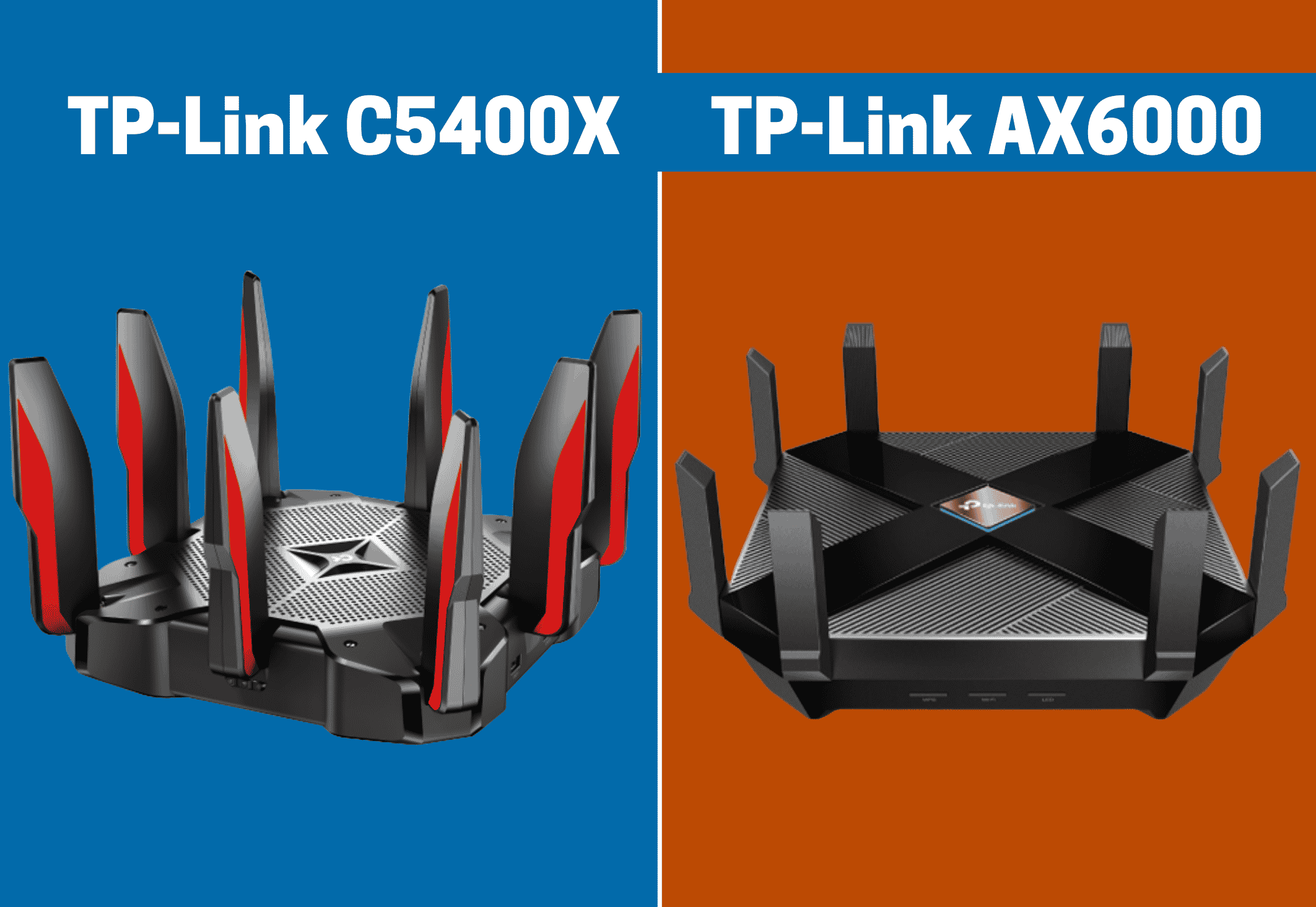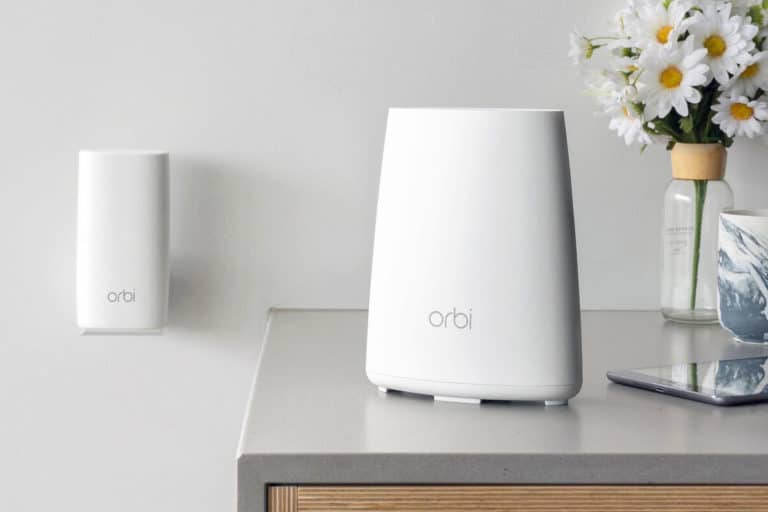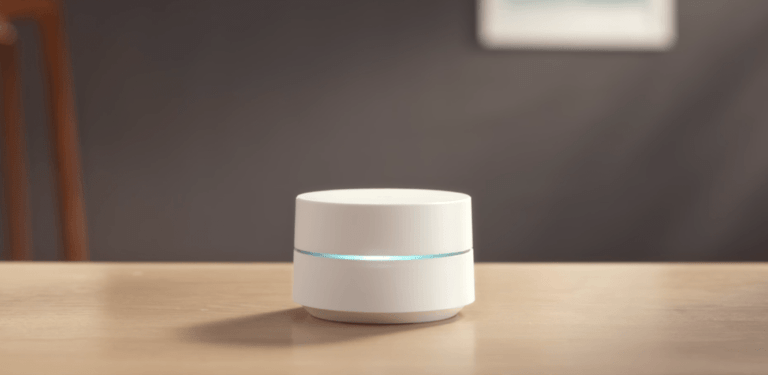TP-Link C5400X vs AX6000: Which WiFi Router is Best For You?
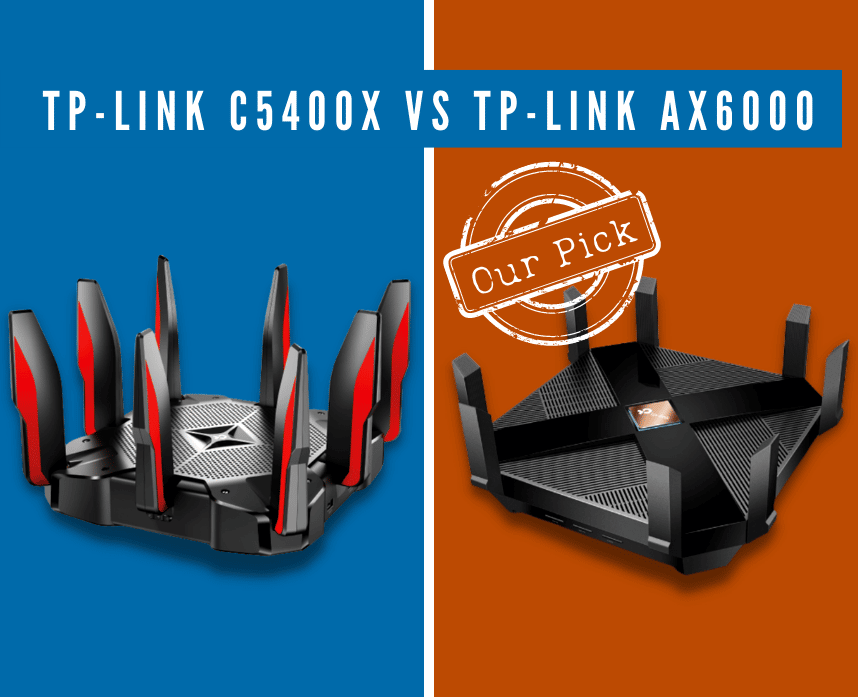
TP-Link offers one of the most competitive routers in the market. Given its price point, a lot of its routers have high-cutting technology and top-notch security features. Among the routers TP-Link produced, let’s look at TP-Link C5400X vs AX6000.
We’ve reviewed many routers in the past. So we genuinely understand that choosing the right router can be tricky. To see which is better, we’ll take a look at performance, speed, features, design, cost, and customer ratings.
Generally, both TP-Link C5400X and AX6000 are great gaming router choices. Both routers have similar features, but they have one big difference. The C400X is a Wi-Fi 5 tri-band router, while the AX6000 is a Wi-Fi 6 dual-band router.
Let’s get into details and let the comparison battle, begin!
Table of Contents
TP-Link C5400X vs AX6000: In a nutshell
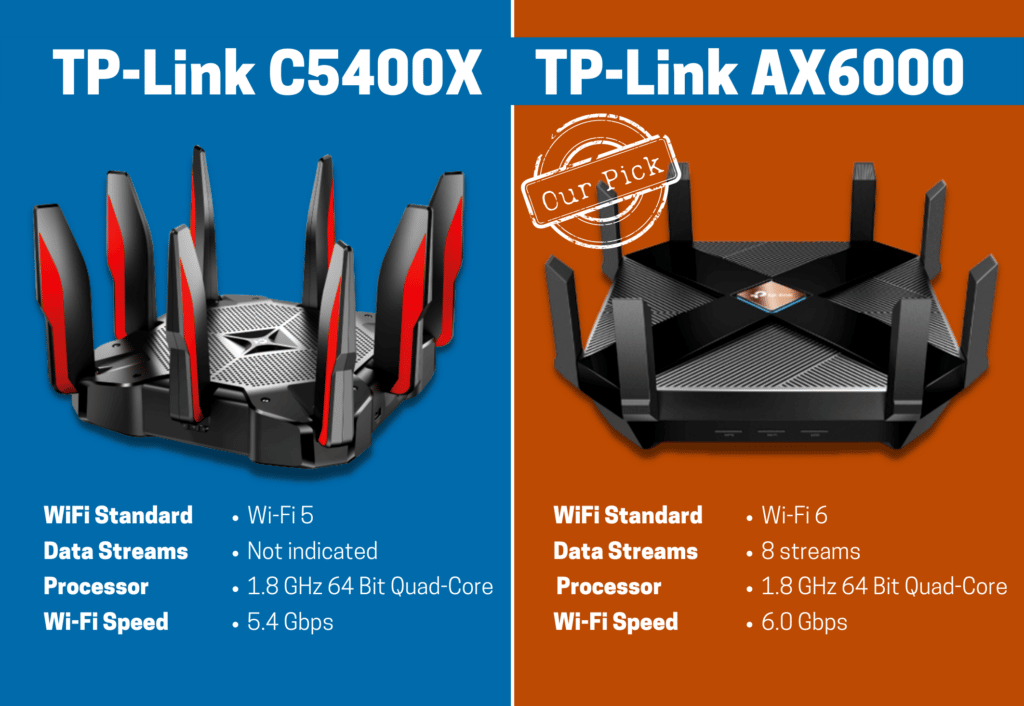
TP-Link Archer C5400X is a Wi-Fi 5 tri-band router with a battle-tested 1.8 quad-core processor. With a total maximum speed of 5,400 Mbps, MU-MIMO, and QoS, gamers can fully enjoy dominating the online battlefield, lag-free.
The built-in technologies like beamforming, Airtime Fairness, and RangeBoost ensure that more wireless devices can enjoy strong wi-fi signals from a distance. While it’s specifically marketed to gamers, the C5400X is also a powerful home router.
The TP-Link Archer AX6000 is a Wi-Fi 6 dual-band router with MU-MIMO, 4T4R, and 8 data streams. Multiple connected devices can enjoy smooth and ultrafast 5.9 Gbps speeds without congestion and interruption.
The router comes with a band steering feature, which automatically directs clients to a less congested band. It’s also compatible with OneMesh, so creating a power-efficient wi-fi ecosystem is easier and more flexible.
The C5400X and AX6000 come with a lifetime subscription to HomeCare, which gives you optimum network protection and robust parental controls. They also have 8 high-powered antennas which guarantee strong wireless signal coverage.
It’s easy to conclude from here, but let’s go deeper down the rabbit hole.
TP-Link C5400X vs AX6000: Performance
When choosing a new router, it’s ideal to choose one that suits your needs. But, it’s also essential to future-proof them. You wouldn’t want to upgrade your devices every now and then, right?
In terms of performance, we will compare the specifications and hardware features. Will the specs of these routers live up to the expectations of the future? Let’s find out.
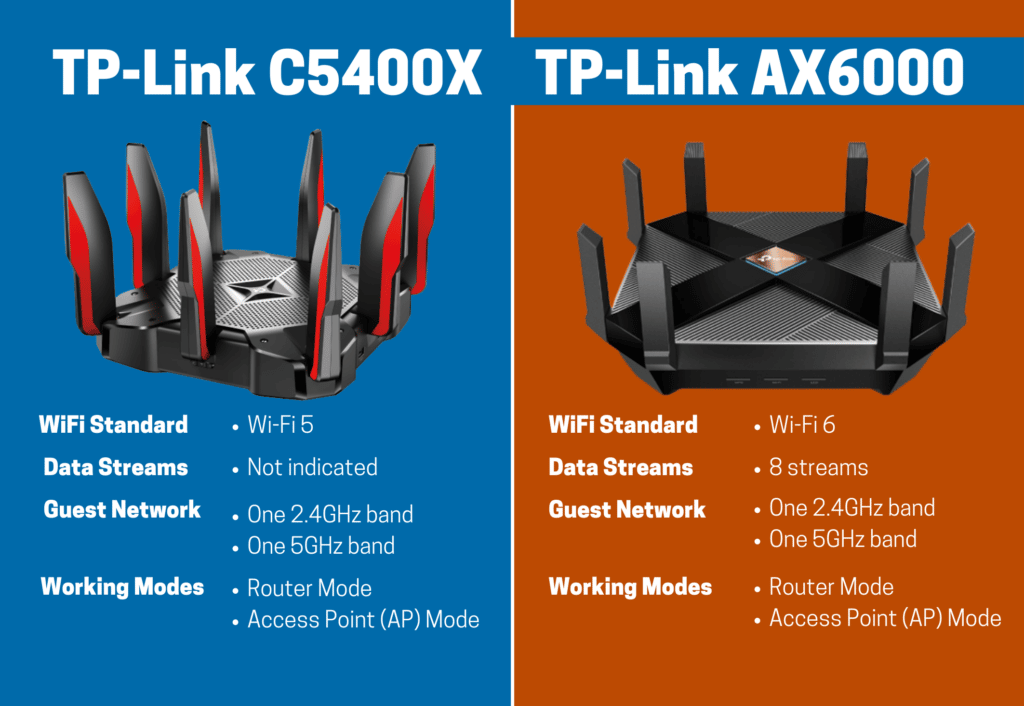
| Specifications List | TP-Link C5400X | TP-Link AX6000 |
| WiFi Standard | Wi-Fi 5 | Wi-Fi 6 |
| Data Streams | Not indicated | 8 streams |
| Guest Network | One 2.4GHz band One 5GHz band | One 2.4GHz band One 5GHz band |
| Working Modes | Router Mode Access Point (AP) ModeRouter Mode Access Point (AP) Mode |
The Archer AX6000 stands out from the C5400X with 8 data streams and Wi-Fi 6 support features. Wi-Fi 6 (802.11ax) offers faster and broader wireless signal strength. It also provides a higher capacity, so it’s perfect for gaming and home uses.
On top of that, the 8 data streams ensure that each connected devices get optimum speeds.
Just imagine data streams as paying for your groceries. If one counter is only open, waiting in line for payment is super frustrating, right? But if 8 counters are available, transactions are fast and smooth. Plus, you can quickly move where the line is shorter.
So whether you’re gaming or video streaming, all connected devices can transmit data seamlessly. Lag-free gaming and streaming for all users any time, everywhere.
While Wi-fi 5 routers, like the C5400X, also offer optimum speeds, Wi-Fi 6 routers are at a more significant advantage. It’s future-proof, and it’s backward compatible. So, whether you have old devices, you’d have no problems with getting fast internet speeds.
Winner: TP-Link AX6000
Hardware Specs
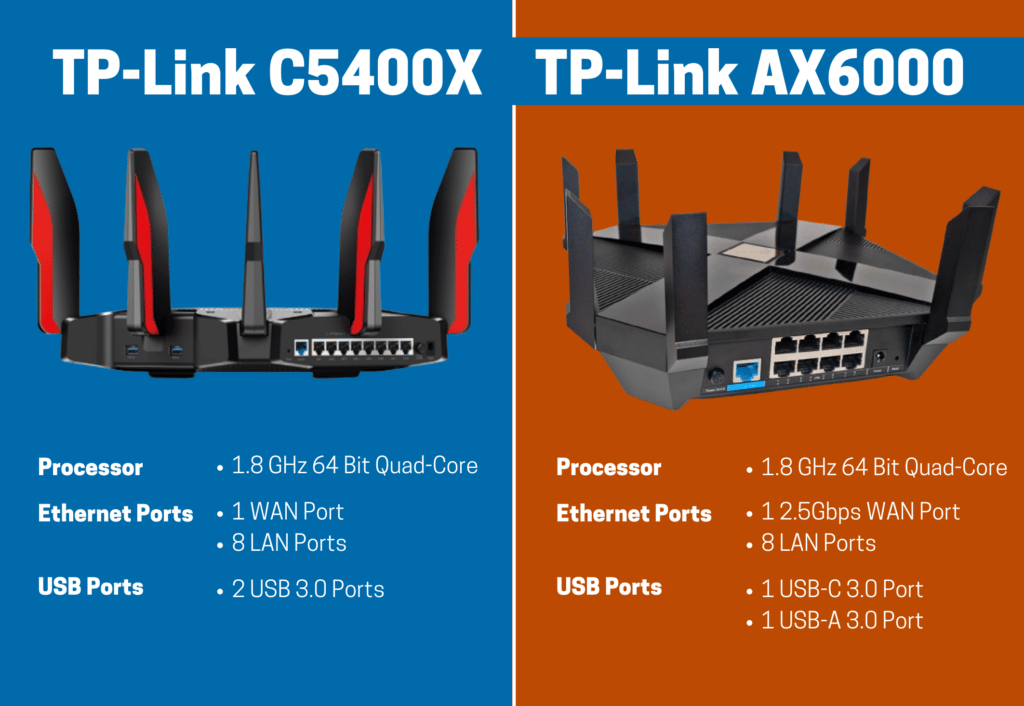
| Specifications List | TP-Link C5400X | TP-Link AX6000 |
| Processor | 1.8 GHz 64 Bit Quad-Core | 1.8 GHz 64 Bit Quad-Core |
| Ethernet Ports | 1 WAN Port 8 LAN Ports | 1 x 2.5Gbps WAN Port 8 LAN Ports |
| USB Ports | 2 USB 3.0 Ports | 1 USB-C 3.0 Port 1 USB-A 3.0 Port |
| Power Button | ✔ | ✔ |
| Wi-Fi Button | ✔ | ✔ |
| LED Button | ✔ | ✔ |
| WPS Button | ✔ | ✔ |
| Reset Button | ✔ | ✔ |
Looking at the hardware specs, the C5400X and AX6000 have a lot in common. With 9 ethernet ports, you can effortlessly expand wired connections and connect more wired devices. You can even connect a gaming console for a full-blast gaming experience.
The C5400X has a 1.8 GHz 64 Bit Quad-Core. It’s powered with 3 more co-processors and 1GB RAM. Under ideal conditions, it’s fit for heavy-duty gaming and other daily online activities.
The AX6000 has a 1.8 GHz 64 Bit Quad-Core and 2 more co-processors. It fell a bit short processor-wise, but it has a 2.5 gigabit WAN port, which guarantees faster connections.
Apart from the processor, both routers have the same features from the buttons to the number of ports. Both routers have USB 3.0 ports, which theoretically transmit data up to 5Gbps.
Winner: Tie
TP-Link C5400X vs AX6000: Wi-Fi Speed and Coverage
Sometimes we put all the blame on the internet service providers (ISP) when we have slow connections. But the thing is, a good router also plays a significant role.
A good router should offer fast speeds and provide a reliable wireless connection anywhere. So let’s take a look at C5400X and AX6000’s wi-fi speed, capacity, and coverage.
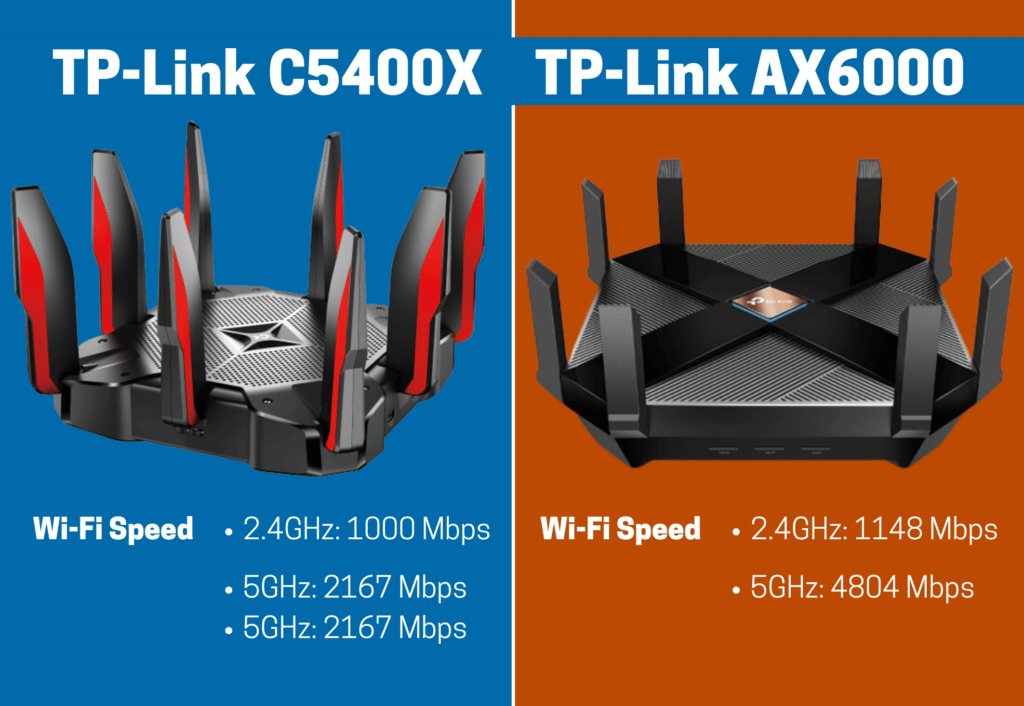
| TP-Link C5400X | TP-Link AX6000 |
| 2.4GHz: 1000 Mbps | 2.4GHz: 1148 Mbps |
| 5GHz: 2167 Mbps 5GHz: 2167 Mbps | 5GHz: 4804 Mbps |
The Archer AX6000 offers slightly faster speeds with the maximum speeds of 5.9 Gbps. With band steering, clients can use either of the bands depending on which has less congestion.
It’s important to note that the TP-Link Archer C5400X is a tri-band router. It has one 2.4GHz band and 2 5GHz bands. It doesn’t necessarily mean that it’s faster, but it is efficient.
With a total speed of 5.4 Gbps, the third band can be used specifically for online gaming. The rest of the users can enjoy the other 5GHz and 2.4GHz bands.
Winner: TP-Link AX6000
Wi-Fi Coverage
| Specs | TP-Link C5400X | TP-Link AX6000 |
| Beamforming | ✔ | ✔ |
| MU-MIMO | ✔ | ✔ |
| OFDMA | ✖ | ✔ |
| Airtime Fairness | ✔ | ✔ |
| DFS | ✔ | ✔ |
| High-power FEM | ✔ | ✔ |
| 4T4R | ✔ | ✔ |
| Antennas | 8 high-powered antennas | 8 high-powered antennas |
With MU-MIMO, 4T4R, and OFDMA, the AX6000 offers up to 4x more device capacity. More wireless devices can connect and enjoy a fair share of signal and internet connection.
These built-in technologies make sure that a connected device can enjoy a strong wireless connection. There won’t be any bandwidth shortage and everyone gets optimum wi-fi speeds.
Even though the Archer C5400X doesn’t offer an OFDMA structure, it can still handle multiple connected devices.
Both routers have 8 high-powered antennas and high-power FEM, so they can deliver strong signals throughout a 4-bedroom house. If you really want to eliminate deadspots, if there are any, the AX6000 is mesh-ready.
Winner: TP-Link AX6000
TP-Link C5400X vs AX6000: Features and Design
Choosing the design is a no-brainer. We tend to lean towards what’s compelling and something that matches our aesthetics.
Both routers give off a contemporary vibe. But if you’re a fan of the red-black combo, we think you’ll like the C5400X. If you want something a bit minimalistic, the AX6000 is something right up in your alley.
Aside from the color combos and style, let’s take a look at security features, size, mesh readiness, and ease of use.
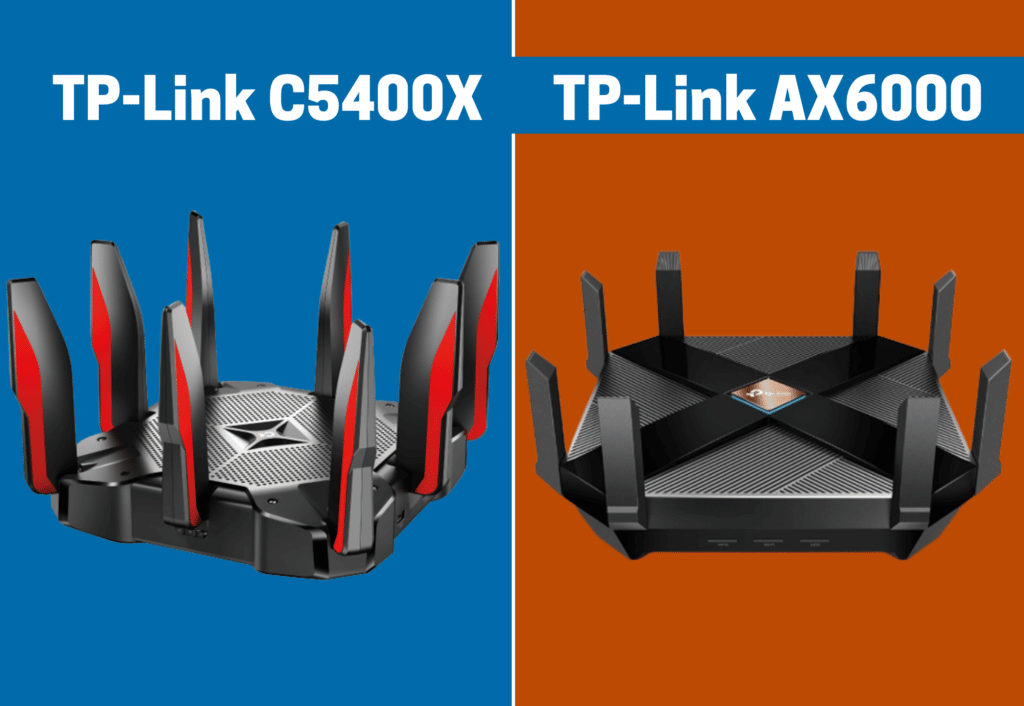
| Features and Design | TP-Link C5400X | TP-Link AX6000 |
| TP-Link HomeCare | ✔ | ✔ |
| OneMesh Compatibility | ✖ | ✔ |
| Size and Dimensions (WxDxH) | 11.3 × 11.3 × 7.2 in | 10.3 × 10.3 × 2.4 in. |
| Ease of Use (Easy set up on the Tether App or TP-Link website) | ✔ | ✔ |
Both AX6000 and C5400X are accessible through the Tether App and are powered with TP-Link HomeCare. When you buy either of the routers, you can enjoy a lifetime subscription to HomeCare. It keeps your devices and network from viruses or cyber threats.
It comes with the following features:
- Parental control
It allows parents to create an individual user profile for their kids and other family members. Admins can sort and customize profiles, give time allowances, and monitor browsing histories. Parents can also filter keywords linked to sex, violence, and drugs.
- Quality of Service (QoS)
With QoS, you can assign a specific bandwidth for particular activities. You can also prioritize specific apps and devices.
- Antivirus
Protect your home network from malicious sites. It also has an Intrusion Prevention System, (IPS), and Infected Device Quarantine (IDQ).
In terms of size, the C5400X is slightly bigger compared to the AX6000. It’s a bit difficult to hide but you can mount it on a wall. Additionally, the C5400X has detachable antennas, so it’s easier to adjust them where you want to.
What makes the AX6000 different is, that it’s OneMesh-ready. So if your room is in one of the dead zones, getting rid of them is easy as 1-2-3.
Winner: TP-Link AX6000
TP-Link C5400X vs AX6000: Cost and Customer Ratings
Looking at customer reviews and rating online is always a good practice before buying anything. It lets you know what to expect. Plus you’ll get to know the strengths and weaknesses of the product.
The Archer C5400X is a lot cheaper compared to the AX6000. If you ask us, for the features it offers and that price point, that’s already a killer.
A lot of customers love the C5400X, but you really can’t keep negative reviews off the table. Some complain about compatibility with WiFi 6 devices. While some complain the 2.4 GHz band is easily congested.
The Archer AX6000 also received a lot of positive reviews. Clients loved the router’s fast speeds and efficiency. But, some complained about bugs in some firmware updates.
Price Winner: TP-Link AX6000
Rating Winner: Tied
Our Verdict: TP-Link Archer AX6000
The comparison between the TP-Link Archer C5400X and TP-Link Archer AX6000 is a tight battle. Both routers offer similar features in some aspects, but the AX6000 won with a slight advantage.
Now that technology continues to advance choosing a Wi-Fi 6 router is a go-to option. With the Archer AX6000’s features, it’ll surely last for a long time.
A friendly reminder that the best router is the one that suits your budget and needs. If you want to future-proof your home, the AX6000 is best for you. But if you’re on a tight budget, the C5400X is an excellent alternative.
If you want to see more comparisons with the TP-Link AX6000, we’ve compared the AX6000 to the AX11000 that you can read. We also compare the AX3000 vs AX6000 in an article for you.

